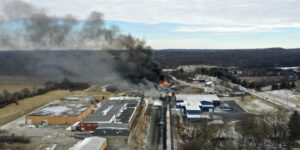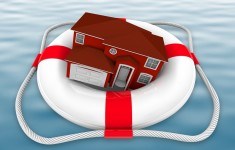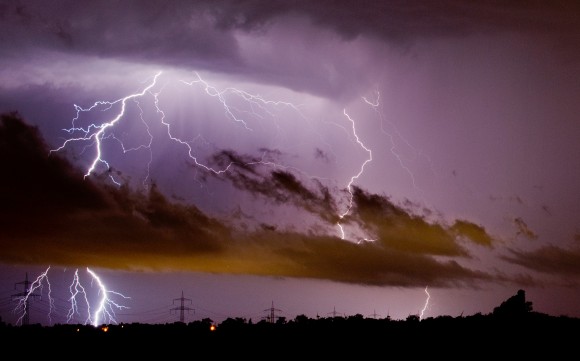Aon plc, a leading global professional services firm, updated its Impact Forecasting Europe Windstorm and Severe Convective Storm (SCS) catastrophe models to incorporate emissions scenarios that inform current and future projections of climate and storm activity across the continent.
Windstorm has been a major historical peril for European insurers and reinsurers, with average annual losses totaling $3.3 billion, according to Aon’s Catastrophe Insight data.
The windstorm model now covers 22 countries, having recently been expanded to include Iberia (Spain and Portugal), the Baltics (Estonia, Lithuania and Latvia), Hungary and Switzerland, in recognition of the importance of quantifying loss potential from windstorm events in these regions, which are not well modeled and have experienced major events such as Windstorm Klaus (2009) in Spain and Windstorm Alexandra (2014) across the Baltic region.
The SCS model, allowing flexible hours clause application to the results, now covers 12 countries, expanding to Slovakia, Hungary and Italy. In 2022, Italy experienced major hail events, which can be modeled along with a number of other historical and scenario events across the region.
The updated models allow clients to more comprehensively forecast their European exposures to assist with portfolio management and capital allocation and help fulfill ESG requirements, Aon said.
As risk management teams and boards, regulators and rating agencies are increasingly asked to evaluate climate risks, the model helps by incorporating future climate projections across a range of emissions and timeline scenarios to help quantify the uncertainty of climate change impacts from European storm events, Aon continued.
“For more than 10 years, our European windstorm models have been helping re/insurers and corporations to quantify and assess their exposures in order to make better business decisions as regards insurance premium calculation, reinsurance purchase, capital requirements, and claims handling,” commented Adam Podlaha, head of Impact Forecasting.
“In this geographical expansion of the windstorm model, the vulnerability component is the main feature of the update. Based on five seasons of loss forecasting, the team has improved the damage functions to better reflect losses caused by smaller to medium storms. In addition, more residential classes have been added to better align to insurers’ data. Finally, introducing Open Exposure Data classes to the model in both ELEMENTS- and Oasis-based platforms, aligns it to client and market requirements,” he added.
Since 1980, windstorms in Europe have caused a total insured loss of $141 billion and an average annual insured loss of $3.3 billion. Severe convective storms have incurred $89 billion in total insured losses, with an annual average of $2.1 billion.
However, since 2000, SCS events have outpaced winter storms, as the peril has accumulated insured $78 billion in insured losses, while windstorms resulted in $77 billion in cumulative losses, according to Aon’s Catastrophe Insight, 2023.
More than 70 years of historical meteorological data have been used to calibrate and validate model performance, incorporating 27 historical windstorm events and 30 severe convective storms that can be modeled, in addition to a large amount of related claims data collected from these storm events.
The model is available on Oasis-based platforms such as Impact Forecasting’s ELEMENTS, the Oasis Loss Modelling Framework and Nasdaq Risk Modelling for Catastrophes. It can be customized and adapted for specific lines of business, or with additional claims information to better quantify a re/insurer’s catastrophe view of risk.
In addition, Impact Forecasting provides windstorm forecasting around each storm event from 72 hours before storm landfall to assist re/insurers and corporations to prepare their claims and event response teams for potential losses and prioritize their activities to help customers.
“Mounting losses caused by natural catastrophes, the impact of climate change and intense regulatory scrutiny means businesses are under pressure to better quantify their exposure and improve resilience to catastrophe risk,” said James Lay, commercial director, Nasdaq Risk Modelling for Catastrophes. “Despite more subdued activity in recent years, European windstorms remain a major peril and this represents a significant upgrade, adding to the depth and sophistication of models available on our platform.”
Source: Aon
Photo credit: AP Photo/dpa, Julian Stratenschulte




















 The Future of the Insurance Customer Experience Is Unity, Personalization
The Future of the Insurance Customer Experience Is Unity, Personalization  Beyond Automation: How GenAI Informs Next Best Action in P/C Insurance Claims and Underwriting
Beyond Automation: How GenAI Informs Next Best Action in P/C Insurance Claims and Underwriting  1 in 6 Americans Report Feeling Stressed Every Day
1 in 6 Americans Report Feeling Stressed Every Day  Revisiting California’s Wildfires: A Personal Journey
Revisiting California’s Wildfires: A Personal Journey 